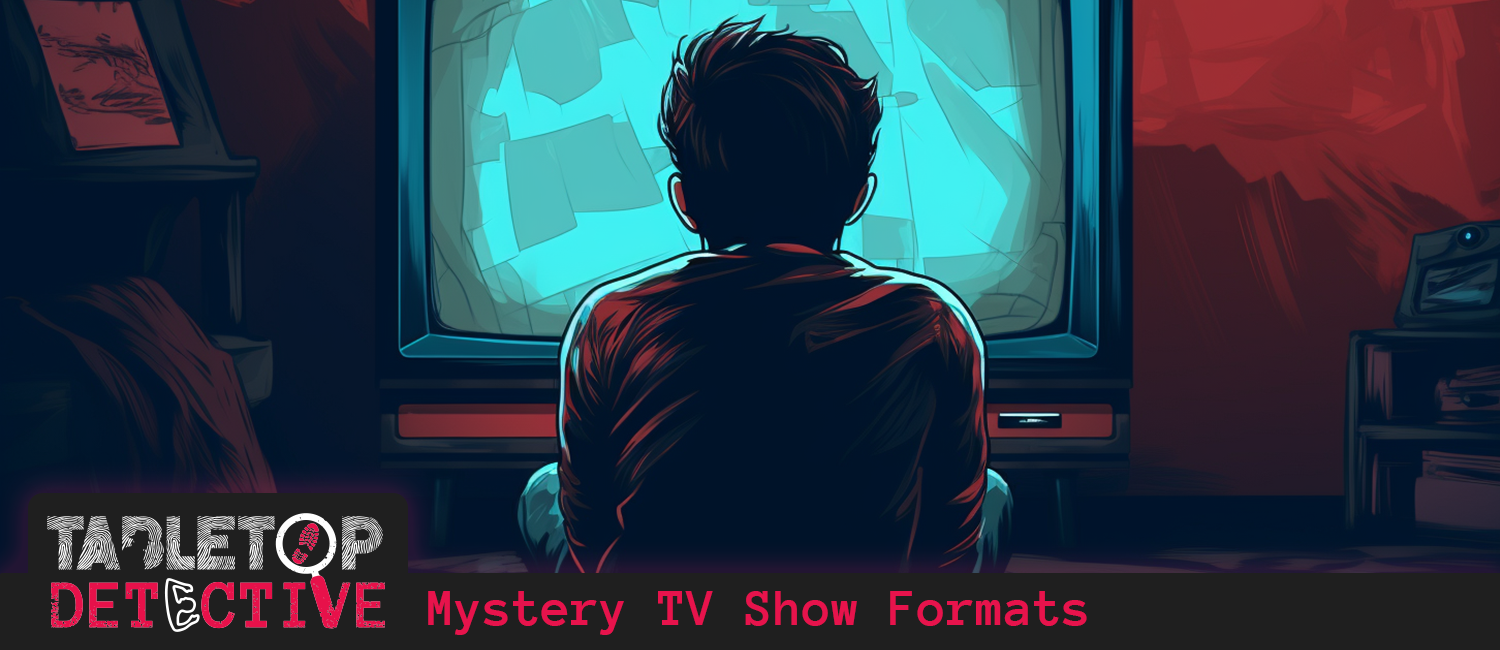Throughout 7 decades of evolution, mystery television shows have featured a variety of topics—from real-world unsolved conundrums to fictional serial killers; investigators—from amateur sleuths to professional law enforcement; and points of view—from the victims themselves to grieving family members to clever detectives to the killers evading the authorities.
Separate from the show’s content or premise, story-focused TV shows (not unscripted shows—like game shows, talk shows, reality shows; or non-fiction documentaries) follow one of three primary formats: long-form narrative, episodic, or anthology. Let’s explore what each of these formats brings to the mystery TV genre, and look at some prominent examples of each.
Long-form narrative mystery TV shows
Long-form narrative mystery shows are television series that center on a complex, overarching mystery or set of mysteries that unfold over multiple episodes or even entire seasons. Rather than wrapping up a self-contained story within a single episode, these shows delve deeply into intricate plots, character development, and thematic explorations.
The prolonged narrative allows for a detailed examination of events, relationships, and clues, often building tension and suspense over time. This format invites viewers to engage actively, piecing together information and speculating on outcomes as the series progresses.
Story resolutions typically occur in season finales or series conclusions, providing answers to the central enigma. These shows often intertwine elements of drama, psychological thriller, and character study, resulting in a rich and immersive viewing experience.
Twin Peaks (1990-1991, 2017)
Created by David Lynch and Mark Frost, the show follows the investigation led by FBI agent Dale Cooper (Kyle MacLachlan) into the murder of homecoming queen Laura Palmer in the eerie town of Twin Peaks. The series delves deep into the town’s dark secrets and supernatural occurrences.
Broadchurch (2013-2017)
This British series revolves around the investigation of a young boy’s murder in the small coastal town of Broadchurch. Detectives Alec Hardy (David Tennant) and Ellie Miller (Olivia Colman) must unravel the mystery while the community grapples with the tragedy.
How to Get Away with Murder (2014-2020)
A gripping mystery drama that intricately weaves the personal and professional lives of law professor Annalise Keating and her students, unveiling a series of mysteries and crimes across multiple timelines throughout its seasons.
Mindhunter (2017-2019)
Set in the late 1970s, this docudrama series follows FBI agents Bill Tench (Holt McCallany) and Holden Ford (Jonathan Groff) as they pioneer the development of modern serial-killer profiling by interviewing and studying real-life murderers.
Big Little Lies (2017-2019)
Based on Liane Moriarty’s novel, the story revolves around a group of mothers in Monterey, California. When a murder occurs during a school function, secrets unravel, revealing the intricate lives and lies of the main characters.
The Sinner (2017-2021)
Detective Harry Ambrose (Bill Pullman) investigates perplexing crime cases where the culprits are known from the outset, but the motivations remain obscured. Each season focuses on a new central mystery.
Episodic mystery TV shows
Episodic mystery shows are tv series where each episode presents and typically resolves a standalone mystery or crime, playfully referred to as the “murder of the week” (MotW) format. While shows may include overarching storylines or character developments across episodes, the primary focus of each installment is a self-contained narrative.
The structure often involves the introduction of a mystery at the episode’s beginning, followed by an investigation, and concludes with a resolution by the end. This format allows viewers to jump into the series at almost any point without needing extensive knowledge of previous episodes.
Such shows often feature recurring main characters, like detectives or experts, who tackle different cases in each episode. Episodic mystery shows provide a consistent formula that offers both familiarity and fresh challenges, making them particularly appealing to fans who enjoy solving puzzles and witnessing the process of deduction.
Columbo (1971-2003)
This series inverts the typical mystery format by showing the crime and the perpetrator at the start. The intrigue lies in watching Detective Columbo (Peter Falk) figure it out and catch the culprit.
Murder, She Wrote (1984-1996)
Follows the adventures of Jessica Fletcher (Angela Lansbury), a mystery writer who finds herself solving real-life murders in her spare time.
Law & Order franchise (1990-)
The “Law & Order” franchise, created by Dick Wolf, is an iconic collection of procedural drama series primarily set in New York City. The stories often draw inspiration from real-life headlines, giving the episodes a timely and topical feel. Despite different focuses across several spin-offs, Law & Order shows remain episodic, where each installment presents and resolves a unique case.
Bones (2005-2017)
Dr. Temperance Brennan (Emily Deschanel), a forensic anthropologist, teams up with FBI Agent Seeley Booth (David Boreanaz) to solve murder cases based on the human remains found.
Psych (2006-2014)
Shawn Spencer (James Roday) possesses keen observational skills and teams up with his best friend Gus (Dulé Hill) to solve crimes for the Santa Barbara Police Department under the guise of a psychic detective.
The Mentalist (2008-2015)
Patrick Jane (Simon Baker), a former psychic medium turned consultant for the California Bureau of Investigation, uses his keen observational skills to solve crimes, all while hunting for the serial killer who murdered his family.
Anthology mystery tv shows
Anthology mystery shows are tv series that present a new and independent mystery narrative in each episode or season, without a continuous storyline from one installment to the next. Each entry typically features a different set of characters, settings, and plots, bound together by a common theme or stylistic approach rather than ongoing narrative threads. Episodes or seasons stand alone, meaning that viewers can typically watch them in any order without missing overarching story elements.
The anthology format allows for diverse storytelling, often exploring various sub-genres, historical periods, or cultural contexts within the realm of mystery. It offers both creators and audiences a fresh canvas for exploration with every new installment, combining the thrill of unraveling secrets with the allure of varied and imaginative tales.
Alfred Hitchcock Presents (1955-1965)
Hosted by Alfred Hitchcock, this series presents standalone suspenseful and mysterious tales, often with a twist ending or moral lesson.
Twilight Zone (1959-1964, 1985-1989, 2002-2003, 2019-2020)
Created by Rod Serling, each episode delves into science fiction, fantasy, and horror territories, often with a mysterious or unexpected twist. While not strictly a mystery show, many episodes offer enigmatic situations that characters need to navigate.
Tales of the Unexpected (1979-1988)
Based on Roald Dahl’s short stories, this series dives into a range of mysterious, suspenseful, and often darkly comedic tales.
Black Mirror (2011-)
Created by Charlie Brooker, this series offers standalone tales exploring the darker aspects of technology and society’s relationship with it. While more sci-fi than traditional mystery, the narratives often unfold in mysterious and unexpected ways.
Inside No. 9 (2014-)
Created by Reece Shearsmith and Steve Pemberton, each episode provides a unique story often centered around mystery, dark humor, or horror. The only commonality is the setting or object labeled with the number 9.
Whatever your favorite tv show format, there’s a variety of mystery shows that might appeal to you. So whether you’re looking to binge on your next Mystery Monday, or simply watch a brain-teaser on your lunch break, I hope we’ve given you something new you’ll love!




